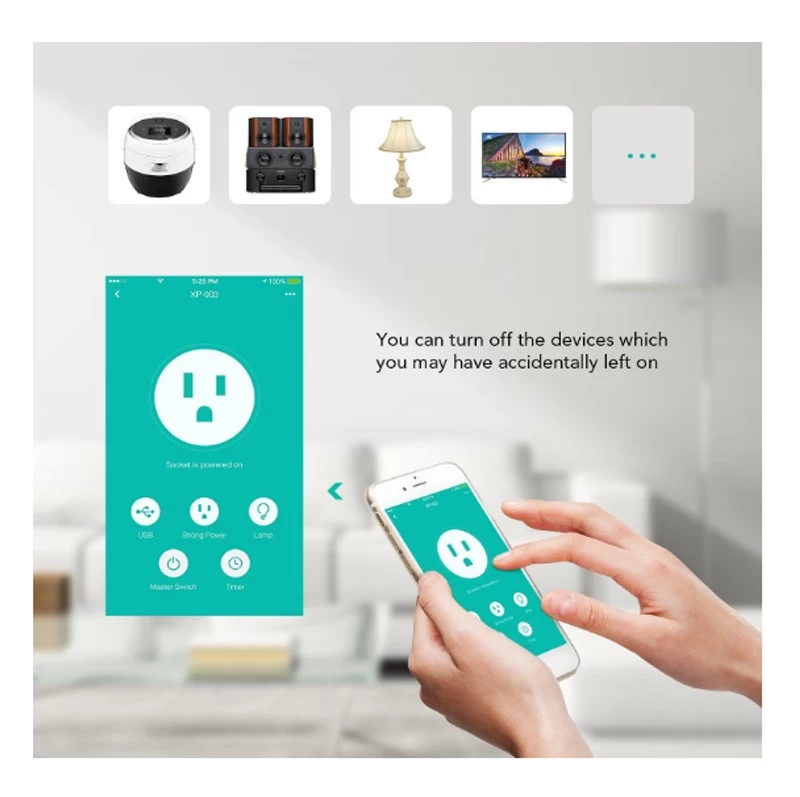What is a "Smart Home"?
smatr home
2018-04-24 16:54:42
Definition:
A smart home, or smart house, is a home that incorporates advanced automation systems to provide the inhabitants with sophisticated monitoring and control over the building's functions. For example a smart home may control lighting, temperature, multi-media, security, window and door operations, as well as many other functions.
In 2003 the UK Department of Trade and Industry (DTI) came up with the following definition for a smart home:
"A dwelling incorporating a communications network that connects the key electrical appliances and services, and allows them to be remotely controlled, monitored or accessed.”

Smart homes use 'home automation' technologies to provide home owners with 'intelligent' feedback and information by monitoring many aspects of a home. For example, a smart home's refrigerator may be able to catalogue its contents, suggest menus, recommend healthy alternatives, and order replacements as food is used up. A smart home might even take care of feeding the cat and watering the plants.
Many new homes are being built with the additional wiring and controls which are required to run advanced home automation systems. Retro-fitting (adding smart home technologies to an existing property) a house to make it a smart home is obviously significantly more costly than adding the required technologies to a new home due to the complications of routing wires and placing sensors in appropriate places.
Smart home devices and standards

The range of different smart home devices and technologies available is expanding rapidly along with developments in computer controls and sensors. This has inevitably led to compatibility issues and there is therefore a drive to standardise home automation technologies and protocols. In Europe, Installation Bus, or Instabus is becoming a recognised smart home technology protocol for digital communication between smart devices. It consists of a two-wire bus line that is installed along with normal electrical wiring. Instabus lines links appliances to a decentralised communication system and functions like a telephone line over which appliances can be controlled. The European Installation Bus Association is part of Konnex, an association that aims to standardise home and building networks in Europe.
Regardless of the technology, smart homes present some very exciting opportunities to change the way we live and work, and to reduce energy consumption at the same time. Imagine being able to check messages, open windows, operate lights and curtains and monitor how much money your house has made you from your renewable energy system, through your smart phone, from anywhere in the world!
A smart home, or smart house, is a home that incorporates advanced automation systems to provide the inhabitants with sophisticated monitoring and control over the building's functions. For example a smart home may control lighting, temperature, multi-media, security, window and door operations, as well as many other functions.

In 2003 the UK Department of Trade and Industry (DTI) came up with the following definition for a smart home:
"A dwelling incorporating a communications network that connects the key electrical appliances and services, and allows them to be remotely controlled, monitored or accessed.”

Smart homes use 'home automation' technologies to provide home owners with 'intelligent' feedback and information by monitoring many aspects of a home. For example, a smart home's refrigerator may be able to catalogue its contents, suggest menus, recommend healthy alternatives, and order replacements as food is used up. A smart home might even take care of feeding the cat and watering the plants.
Many new homes are being built with the additional wiring and controls which are required to run advanced home automation systems. Retro-fitting (adding smart home technologies to an existing property) a house to make it a smart home is obviously significantly more costly than adding the required technologies to a new home due to the complications of routing wires and placing sensors in appropriate places.
Smart home devices and standards

The range of different smart home devices and technologies available is expanding rapidly along with developments in computer controls and sensors. This has inevitably led to compatibility issues and there is therefore a drive to standardise home automation technologies and protocols. In Europe, Installation Bus, or Instabus is becoming a recognised smart home technology protocol for digital communication between smart devices. It consists of a two-wire bus line that is installed along with normal electrical wiring. Instabus lines links appliances to a decentralised communication system and functions like a telephone line over which appliances can be controlled. The European Installation Bus Association is part of Konnex, an association that aims to standardise home and building networks in Europe.
Regardless of the technology, smart homes present some very exciting opportunities to change the way we live and work, and to reduce energy consumption at the same time. Imagine being able to check messages, open windows, operate lights and curtains and monitor how much money your house has made you from your renewable energy system, through your smart phone, from anywhere in the world!








